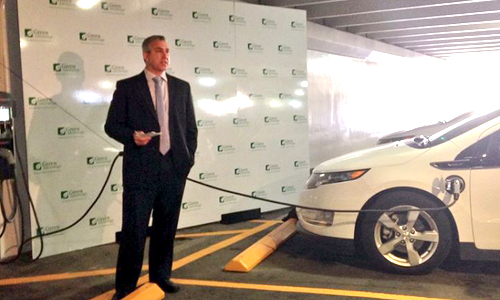FABULOUS LAS VEGAS
Las Vegas – the renowned city of diva and wild entertainment along the Las Vegas strip also happens to have sizzling hot summers reaching up to 40 degrees Celsius in July and August. In fact, it gets so hot that when sun rays reflect off the curved glass surface of the hotel, Vdara, the heat is magnified and could reach temperatures that can singe hair and melt plastic. Scientifically put, this is called the “solar convergence” phenomenon; or commonly referred to as the “death ray.”
Naturally you would think, “what if all this sunlight is turned into solar energy? How productive will that be?” Well, it is official. The world’s largest solar thermal plant is opened in the Mojave Desert in Nevada in February of 2014. This new plan will generate approximately 400 megawatts, equivalent to the amount of energy needed to power 140,000 homes. This project is a collaboration between three companies: NRG, Google, and Brightsource Energy, with a $1.6 billion loan from the US government.
I definitely think that this project is well worth the investment because we can now take advantage of the sun and put it into practical use for local homes. However, nothing is without drawbacks. The land that the project is built on used to inhabit tortoises and coyotes. The project not only disturbed the habitat of tortoises, it also puts the species of tortoises in jeopardy since tortoises are listed as endangered species.
As for some other ways that people in Las Vegas are trying to become more environmentally sustainable, I came across another article. The MGM Resorts International is currently installing 27 EV (Electric Vehicle) charging stations at the MGM owned resorts, including MGM Grand, The Mirage, Mandalay Bay, and many more. These charging stations would make it much more convenient for EV owners to charge their cars, which can help remove a barrier to purchasing one in the first place. But wait – who can use the charging stations again? For now, it is free for hotel guests and employees, but nothing is mentioned about the public at large.
What MGM Resorts International is trying to do is to be a first mover to provide this service and ultimately make this a competitive advantage for tourists to stay at their resorts. My skepticism is if tourists even have access to renting electric vehicles at all? Although I think this is a great move for MGM, they may face a demand shortage for the actual usage of these charging stations. If MGM really wanted to make a difference and reduce gas emissions in the city, they may have to consider collaborating with car rental companies to create an incentive for tourists to actually rent the electric vehicles and pair it up with staying at one of the MGM resorts.
I will certainly not be surprised if this happened in the future.
P.S. The GIF posted at the top, that blinking image of the “Welcome to Fabulous Las Vegas” sign, is now actually powered by three solar-trees installed near the city landmark. What a cool way to show sustainability! Let us take another look at it!


The new solar plant is a very interesting topic. The state of Nevada in general has been very good at maintaining a clean energy supply, with a large portion of it coming from the Hoover Dam. The real question is how well that investment is when you consider California as being the likely buyer for that energy. In a state of over 30 million people, and cannot supply enough power to sustain itself, powering 140000 homes seems insignificant. The plant certainly makes a statement but doesn’t seem practical. The geography of the Mohave along with the energy demands of the area would make nuclear power a better option.
I agree with your point about needing to collaborate with rental companies that offer EVs. The problem is see is not just having EVs assessable but EVs have many too many barriers to be adopted, especially for tourists. Its limited range along with the time needed to charge would be highly unattractive when trying to visit different locations spontaneously. The vehicles that do address those needs are either hybrid electrics or costs too much for the average tourist. Another problem with the charging stations is they take up valuable parking spots that sit idle the majority of the time.